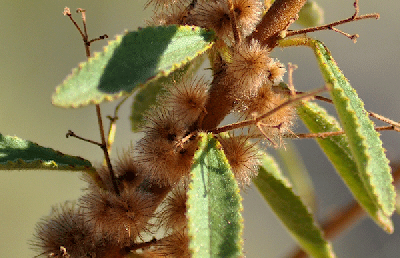FF
During the Devonian Era, 350 million years ago, a great marine deposit was formed here; it eroded away by the hundreds of millions of wet seasons to the present structure of domes, cliffs and gorges. One of the most obvious features of the sandstones is the alternating orange and black or grey banding. The darker bands are on the more permeable layers of rock. They allow moisture to seep through to the rock surface, promoting a dark algal growth. The less permeable layers in between are covered with a patina of iron and manganese staining, creating the orange bands. These outer coatings (the rock beneath is a whitish colour) help to protect the lower parts of the towers from erosion.
"Purnululu" means sandstone in the Kija Aboriginal language. The name Bungle Bungle comes either from the corruption of an Aboriginal name for the area, or from a misspelling of one of the common Kimberley grasses found here, bundle bundle grass.
FF
Mini Palms Gorge
FF
During the Devonian Era, 350 million years ago, a great marine deposit was formed here; it eroded away by the hundreds of millions of wet seasons to the present structure of domes, cliffs and gorges. One of the most obvious features of the sandstones is the alternating orange and black or grey banding. The darker bands are on the more permeable layers of rock. They allow moisture to seep through to the rock surface, promoting a dark algal growth. The less permeable layers in between are covered with a patina of iron and manganese staining, creating the orange bands. These outer coatings (the rock beneath is a whitish colour) help to protect the lower parts of the towers from erosion.
"Purnululu" means sandstone in the Kija Aboriginal language. The name Bungle Bungle comes either from the corruption of an Aboriginal name for the area, or from a misspelling of one of the common Kimberley grasses found here, bundle bundle grass.
FF
Mini Palms Gorge
FF

FF
Painted Firetail Emblema pictum Male
FF
 FF
FFPiccaninny Creek Vista
FF
 FF
FFPied Butcherbird Cracticus nigrogularis
FF
 FF
FFPolycarpaea spirostylis
FF























No comments:
Post a Comment